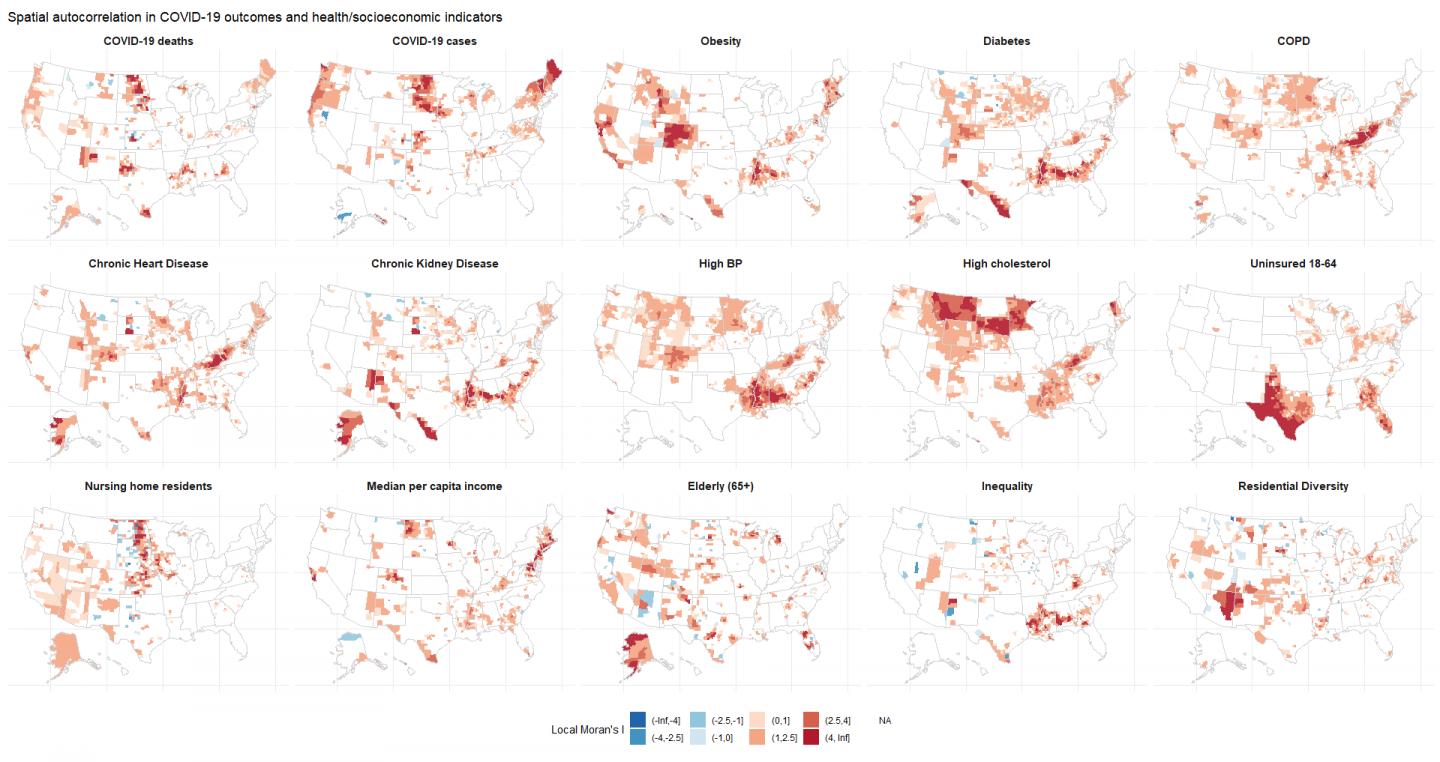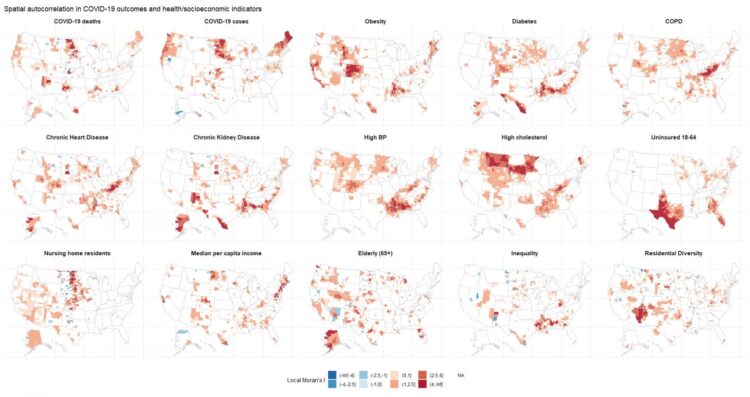Study suggests spatial relationship between COVID-19 mortality and population-level health factors

Credit: Kandula S and Shaman J, 2021, PLOS Medicine
COVID-19 vaccination strategies in the United States are informed by individual characteristics such as age and occupation. A study published in the open access journal PLOS Medicine by Sasikiran Kandula and Jeffrey Shaman of Columbia University, New York, United States suggests that including socioeconomic indicators as prioritization criteria for vaccination may help minimize severe outcomes, particularly deaths.
Efforts to reduce COVID-19 mortality rates in the US have focused on prioritizing vaccination initially for those at a higher risk of severe outcomes. The effectiveness of population-level health and socioeconomic indicators to determine risk of COVID-19 mortality is understudied. To test the hypothesis that health and socioeconomic indicators can accurately model risk of COVID-19 mortality, the researchers extracted county-level estimates of 14 indicators associated with COVID-19 mortality from public data sources. They then modeled the proportion of county-level COVID-19 mortality explained by identified health and socioeconomic indicators, and assessed the estimated effect of each predictor.
The authors found evidence for a spatial relationship between COVID-19 mortality and 9 health and socioeconomic indicators. The prevalence of chronic kidney disease and the proportion of the population resident in nursing homes had the largest individual effect on COVID-19 mortality. Although the research suggests a correlation between health and socioeconomic indicators and COVID-19 mortality, the study was limited by lags in reporting COVID-19 cases and deaths, and therefore these may have been underestimated.
According to the authors, “Our findings here show that differential risks of severe outcomes from COVID-19 across populations can be in part estimated from the structures and contexts in which the outbreak occurs, for example, a population’s quality of health, its access to healthcare and the disparities therein. While vaccine supply continues to be limited for most, and especially low- and middle-income, countries, these population level indicators may help inform optimal allocation.”.
###
Research Article
Peer-reviewed; Observational study; Humans
In your coverage please use this URL to provide access to the freely available paper:
http://journals.
Funding: This work is funded in part by a grant from the National Science Foundation (DMS-2027369) and a gift from the Morris-Singer Foundation to JS. The funders had no role in study design, analysis or decision to publish.
Competing Interests: The authors of this manuscript report the following competing interests: JS and Columbia University disclose ownership of SK Analytics and JS discloses personal fees from BNI (Business Network International). SK consulted for SK Analytics.
Citation: Kandula S, Shaman J (2021) Investigating associations between COVID-19 mortality and population-level health and socioeconomic indicators in the United States: A modeling study. PLoS Med 18(7): e1003693. https:/
Media Contact
PLOS Medicine
[email protected]
Related Journal Article
http://dx.





